POD Analysis of Entropy Generation in a Laminar Separation Boundary Layer
Abstract
:1. Introduction
2. Experimental Facility
3. Dara Processing Method
3.1. POD Method
3.2. Estimation of Entropy Generation
3.3. Effect of Decomposition Region Size on POD
4. Results and Discussion
4.1. Time-Mean Flow Field
4.2. POD Analysis of Flow Field
4.3. Entropy Generation Analysis
4.3.1. Entropy Generation of Original Flow Field
4.3.2. Entropy Generation of POD Mode
5. Conclusions
Author Contributions
Funding
Conflicts of Interest
Nomenclature
| Shape factor | |
| Reynolds number | |
| Entropy generation | |
| Temperature | |
| Instantaneous streamwise velocity | |
| Streamwise velocity fluctuation () | |
| Averaged streamwise velocity | |
| Streamwise velocity of main flow | |
| Instantaneous spanwise velocity | |
| Spanmwise velocity fluctuation () | |
| Averaged spanwise velocity | |
| POD coefficients | |
| Eigenvalue of POD | |
| Basis function of POD | |
| Density | |
| Kinetic viscosity | |
| Kinematic viscosity | |
| Boundary layer thickness | |
| Displacement boundary layer thickness | |
| Momentum boundary layer thickness |
References
- Denton, J.D. The 1993 IGTI Scholar Lecture: Loss Mechanisms in Turbomachines. J. Turbomach. 1993, 115, 621–656. [Google Scholar] [CrossRef]
- Bejan, A.; Kestin, J. Entropy Generation through Heat and Fluid Flow. J. Appl. Mech. 1983, 50, 475. [Google Scholar] [CrossRef]
- Naterer, G.F.; Camberos, J.A. Entropy Based Design and Analysis of Fluids Engineering Systems; CRC Press: Boca Raton, FL, USA, 2008. [Google Scholar]
- Bejan, A. Entropy Generation Minimization; Advanced Engineering Thermodynamics; John Wiley & Sons, Inc.: Hoboken, NJ, USA, 1995. [Google Scholar]
- Enrico, S. Calculating entropy with CFD. Mech. Eng. 1997, 119, 86–88. [Google Scholar]
- Suder, K.L.; Obrien, J.E.; Reshotko, E. Experimental Study of Bypass Transition in a Boundary Layer; National Aeronautics & Space Administration Report; NASA: Washington, DC, USA, 1988.
- Rotta, J.C. Turbulent boundary layers in incompressible flow. Prog. Aerosp. Sci. 1962, 2, 1–95. [Google Scholar] [CrossRef]
- Mceligot, D.M.; Walsh, E.J.; Laurien, E.; Spalart, P.R. Entropy Generation in the Viscous Parts of Turbulent Boundary Layers. J. Fluids Eng. 2008, 130, 61205. [Google Scholar] [CrossRef]
- Moore, J.; Moore, J.G. Entropy Production Rates from Viscous Flow Calculations: Part I—A Turbulent Boundary Layer Flow. In Proceedings of the ASME 1983 International Gas Turbine Conference and Exhibit, Phoenix, AZ, USA, 27–31 March 1983. [Google Scholar]
- Kramer-Bevan, J.S. A Tool for Analyzing Fluid Flow Losses. Master’s Thesis, University of Waterloo, Waterloo, ON, Canada, 1992. [Google Scholar]
- Adeyinka, O.B.; Naterer, G.F. Apparent Eentropy Production Difference with Heat and Fluid Flow Irrevesibilities. Numer. Heat Transf. Part B Fundam. 2002, 42, 411–436. [Google Scholar] [CrossRef]
- Adeyinka, O.B.; Naterer, G.F. Modeling of Entropy Production in Turbulent Flows. J. Fluids Eng. 2005, 126, 893–899. [Google Scholar] [CrossRef]
- Hanjalić, K.; Launder, B. Modelling Turbulence in Engineering and the Environment; Cambridge University Press: Cambridge, UK, 2000. [Google Scholar]
- Lumley, J.L. Stochastic Tools in Turbulence; Dover Publications: Mineola, NY, USA, 2007. [Google Scholar]
- Schmid, P.; Sesterhenn, J. Dynamic mode decomposition of experimental data. In Proceedings of the 8th International Symposium on Particle Image Velocimetry, Melbourne, Australia, 25–28 August 2009. [Google Scholar]
- Cammilleri, A.; Gueniat, F.; Carlier, J.; Pastur, L.; Mémin, E.; Lusseyran, F.; Artana, G. POD-spectral decomposition for fluid flow analysis and model reduction. Theor. Comput. Fluid Dyn. 2013, 27, 787–815. [Google Scholar] [CrossRef] [Green Version]
- Zhu, J.; Huang, G.; Fu, X.; Fu, Y.; Yu, H. Use of POD Method to Elucidate the Physics of Unsteady Micro-Pulsed-Jet Flow for Boundary Layer Flow Separation Control. In Proceedings of the ASME Turbo Expo 2013: Turbine Technical Conference and Exposition, San Antonio, TX, USA, 3–7 June 2013. [Google Scholar]
- Hammad, K.J. Coherent Structures in Turbulent Boundary Layer Flows over a Shallow Cavity. In Proceedings of the ASME 2017 International Mechanical Engineering Congress and Exposition, Tampa, FL, USA, 3–9 November 2017. [Google Scholar]
- Anbry, N. The dynamics of coherent structures in the wall region of a turbulent boundary layer. J. Fluid Mech. 1988, 192, 115–173. [Google Scholar]
- Chen, H.; Reuss, D.L.; Sick, V. On the use and interpretation of proper orthogonal decomposition of in-cylinder engine flows. Meas. Sci. Technol. 2012, 23, 085302. [Google Scholar] [CrossRef]
- Cizmas, A.; Paul, G.; Palacios, A. Proper Orthogonal Decomposition of Turbine Rotor-Stator Interaction. J. Propuls. Power 2003, 19, 268–281. [Google Scholar] [CrossRef]
- Lengani, D.; Simoni, D. Recognition of coherent structures in the boundary layer of a low-pressure-turbine blade for different free-stream turbulence intensity levels. Int. J. Heat Fluid Flow 2015, 54, 1–13. [Google Scholar] [CrossRef]
- Lengani, D.; Simoni, D.; Ubaldi, M.; Zunino, P.; Bertini, F. Experimental Investigation on the Time–Space Evolution of a Laminar Separation Bubble by Proper Orthogonal Decomposition and Dynamic Mode Decomposition. J. Turbomach. 2016, 139, 31006. [Google Scholar] [CrossRef]
- Tian, Y.; Ma, H.; Wang, L. An Experimental Investigation of the Effects of Grooved Tip Geometry on the Flow Field in a Turbine Cascade Passage Using Stereoscopic PIV. In Proceedings of the ASME Turbo Expo 2017: Turbomachinery Technical Conference and Exposition, Charlotte, NC, USA, 26–30 June 2017. [Google Scholar]
- Vinuesa, R.; Schlatter, P.; Nagib, H.M. Role of data uncertainties in identifying the logarithmic region of turbulent boundary layers. Exp. Fluids 2014, 55, 1751. [Google Scholar] [CrossRef]
- Walsh, E.J.; Mc Eligot, D.M.; Brandt, L.; Schlatter, P. Entropy Generation in a Boundary Layer Transitioning under the Influence of Freestream Turbulence. J. Fluids Eng. 2011, 133, 61203. [Google Scholar] [CrossRef]
- Skifton, R.S.; Budwig, R.S.; Crepeau, J.C.; Xing, T. Entropy Generation for Bypass Transitional Boundary Layers. J. Fluids Eng. 2017, 139, 041203. [Google Scholar] [CrossRef]
- Vinuesa, R.; Orlu, R.; Vila, C.S.; Ianiro, A.; Discetti, S.; Schlatter, P. Revisiting History Effects in Adverse-Pressure-Gradient Turbulent Boundary Layers. Flow Turbul. Combust. 2017, 99, 565–587. [Google Scholar] [CrossRef] [PubMed] [Green Version]
- Vinuesa, R.; Bobke, A.; Örlü, R.; Schlatter, P. On determining characteristic length scales in pressure-gradient turbulent boundary layers. Phys. Fluids 2016, 28, 55101. [Google Scholar] [CrossRef]
- Vila, C.S.; Orlu, R.; Vinuesa, R.; Schlatter, P.; Ianiro, A.; Discetti, S. Adverse-Pressure-Gradient Effects on Turbulent Boundary Layers: Statistics and Flow-Field Organization. Flow Turbul. Combust. 2017, 99, 589–612. [Google Scholar] [CrossRef] [PubMed] [Green Version]
- Lengani, D.; Simoni, D.; Ubaldi, M.; Zunino, P.; Bertini, F.; Michelassi, V. Accurate Estimation of Profile Losses and Analysis of Loss Generation Mechanisms in a Turbine Cascade. J. Turbomach. 2017, 139, 121001–121007. [Google Scholar] [CrossRef]

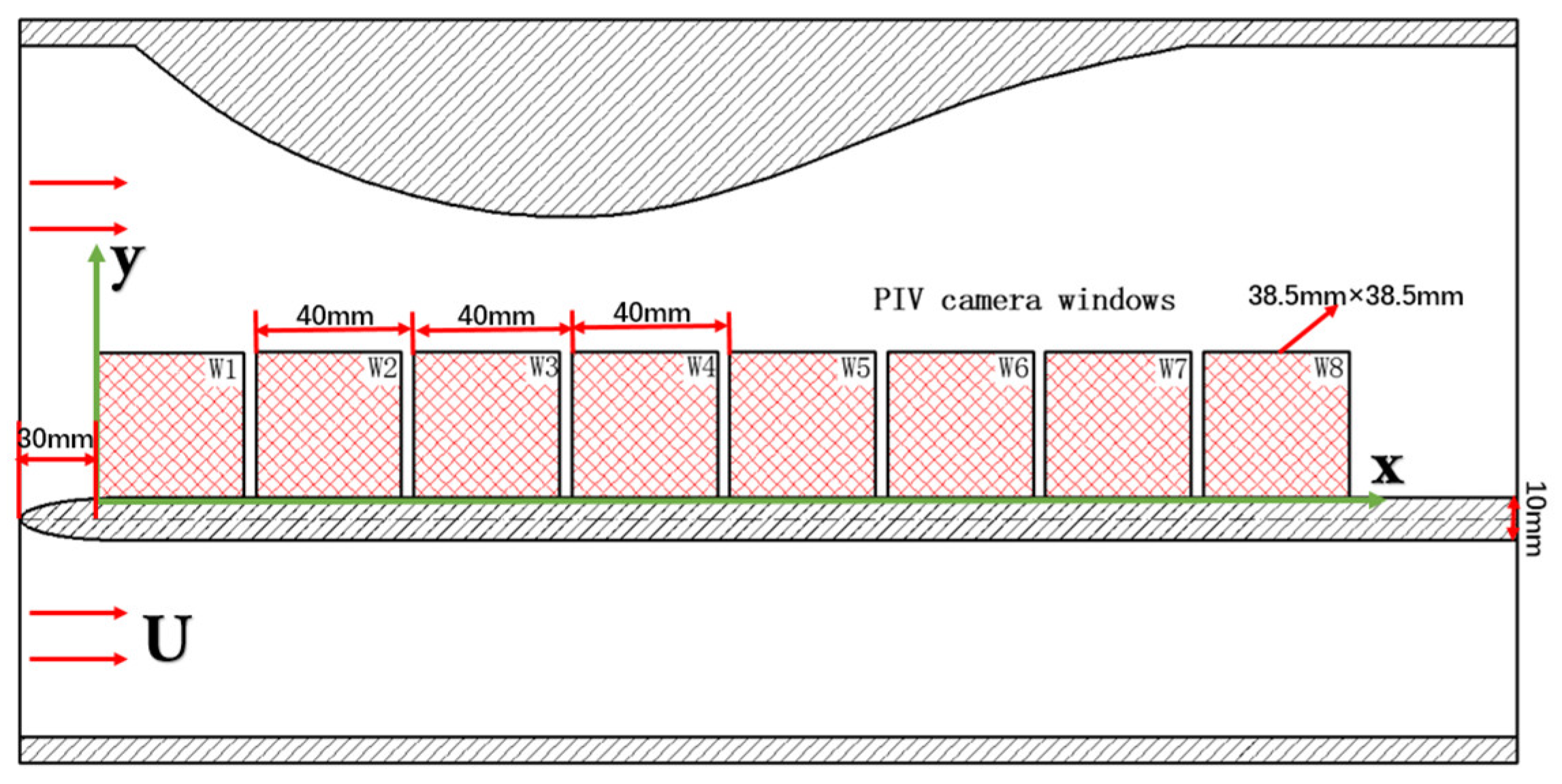
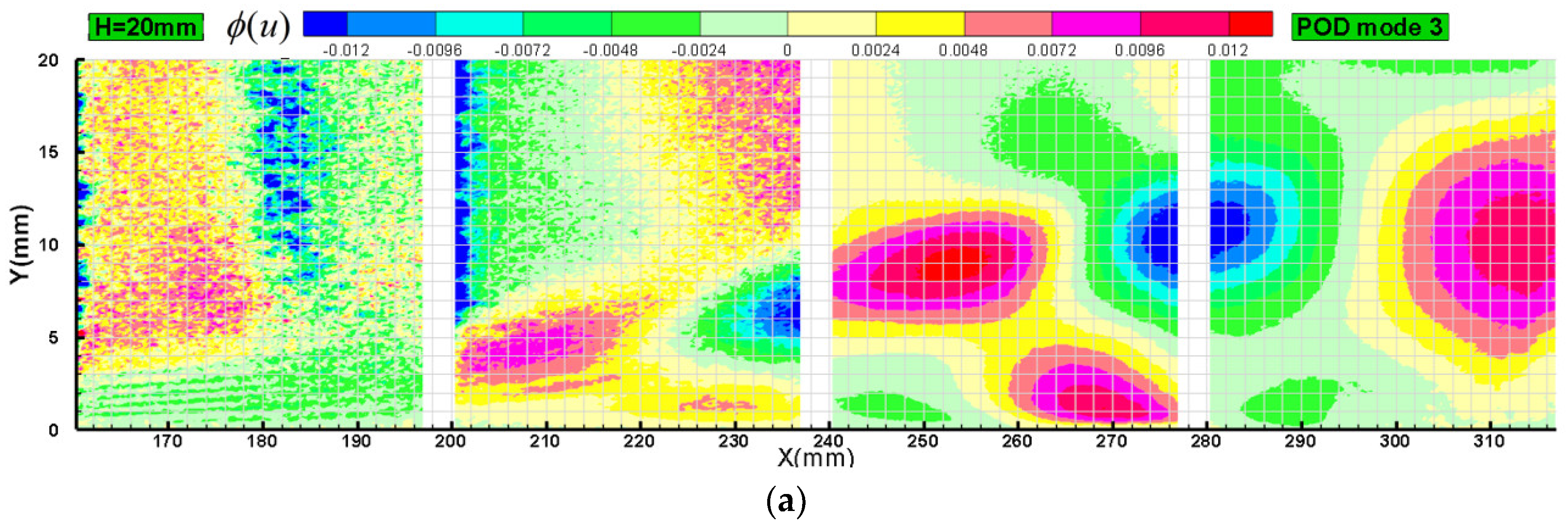

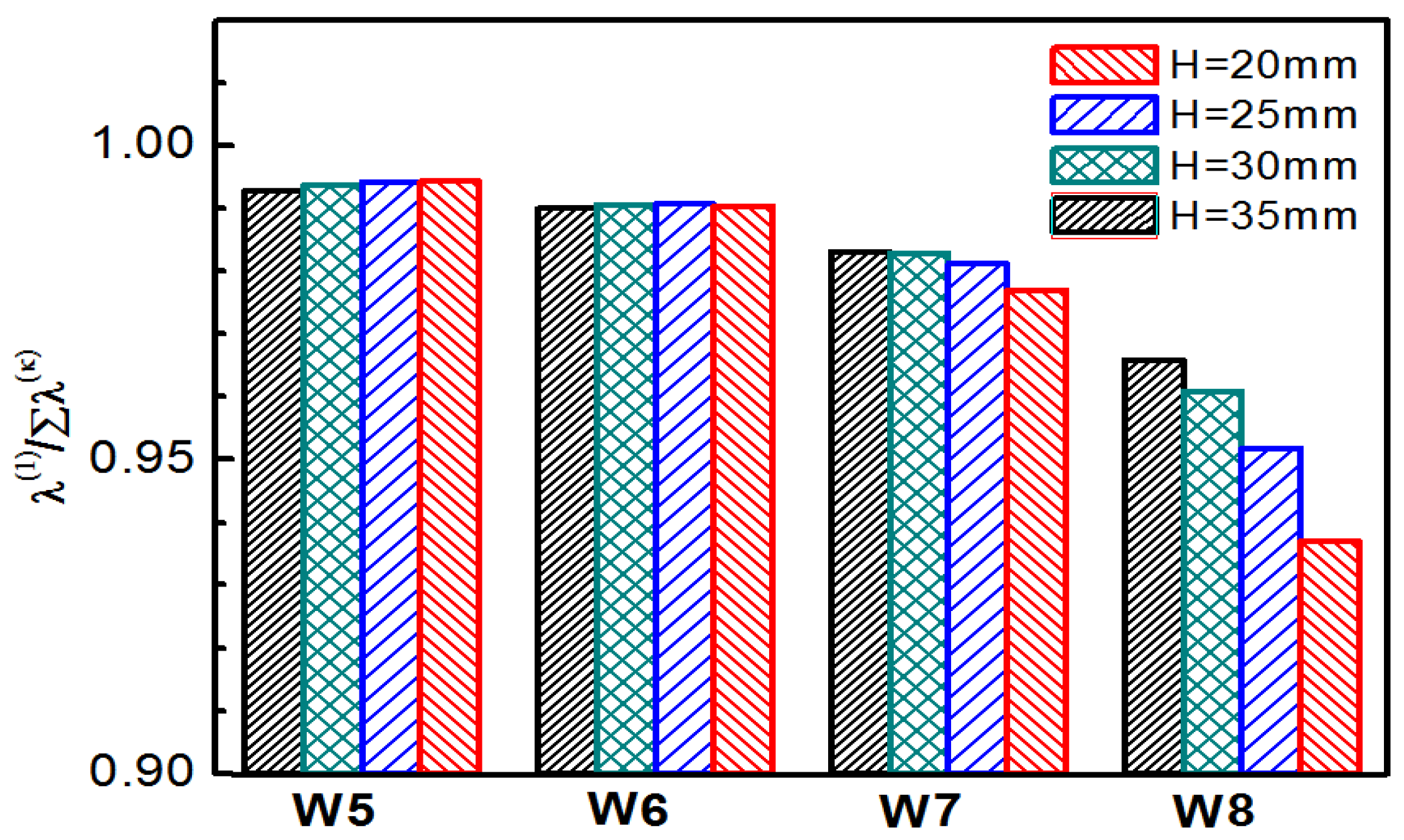

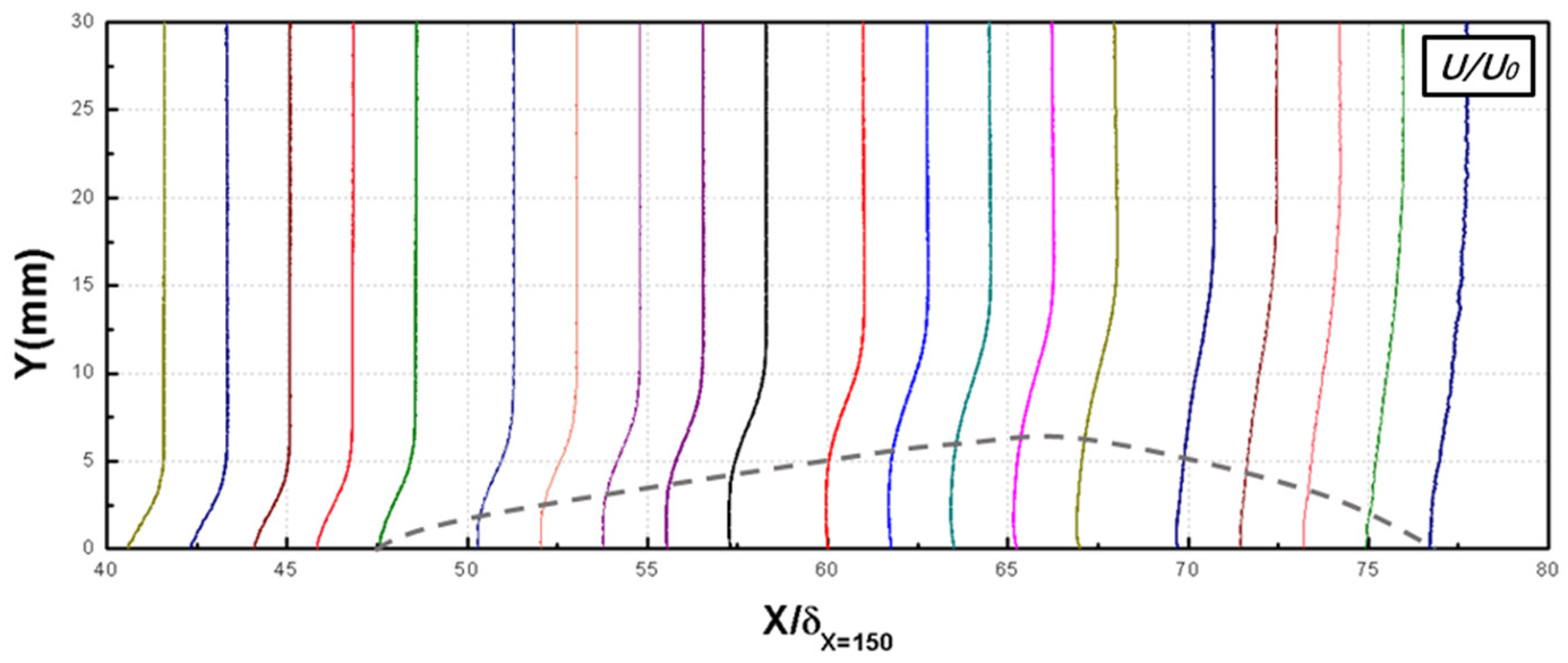
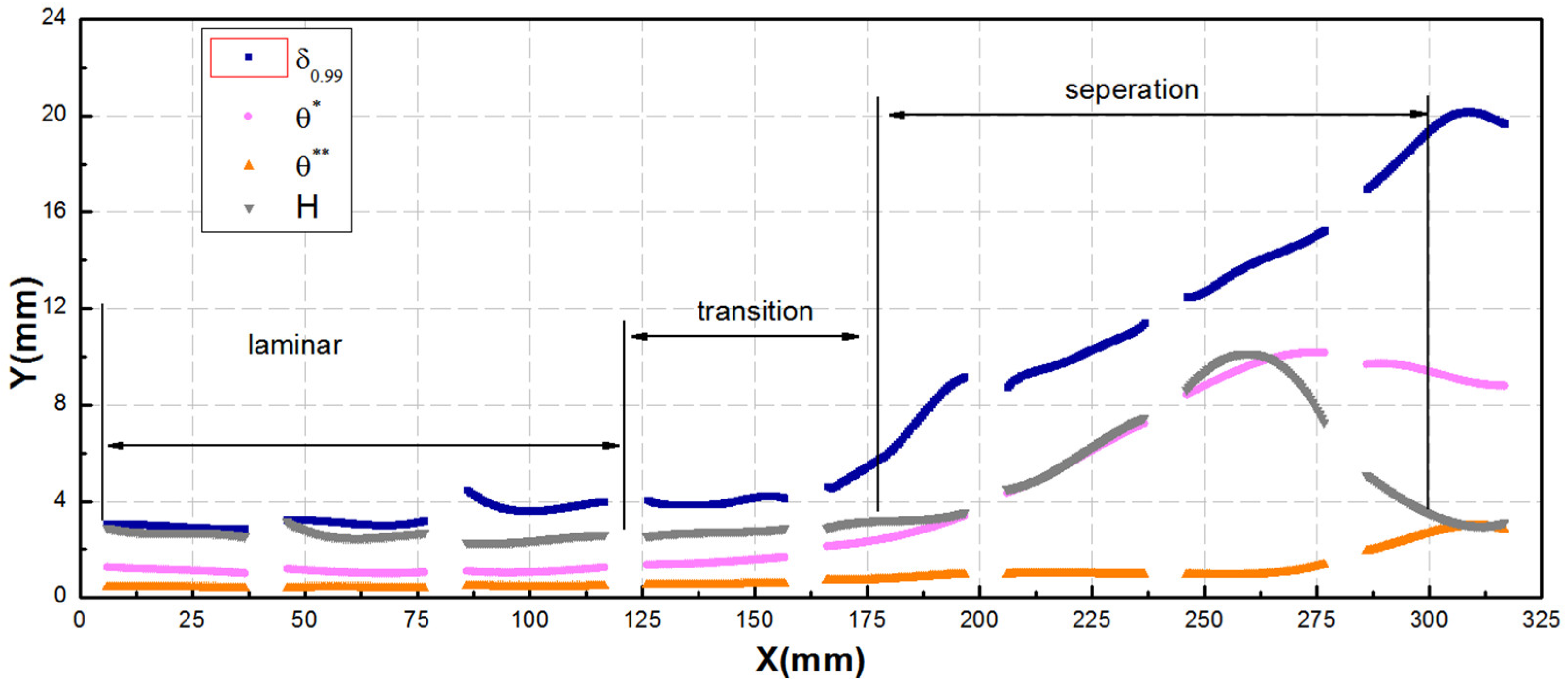


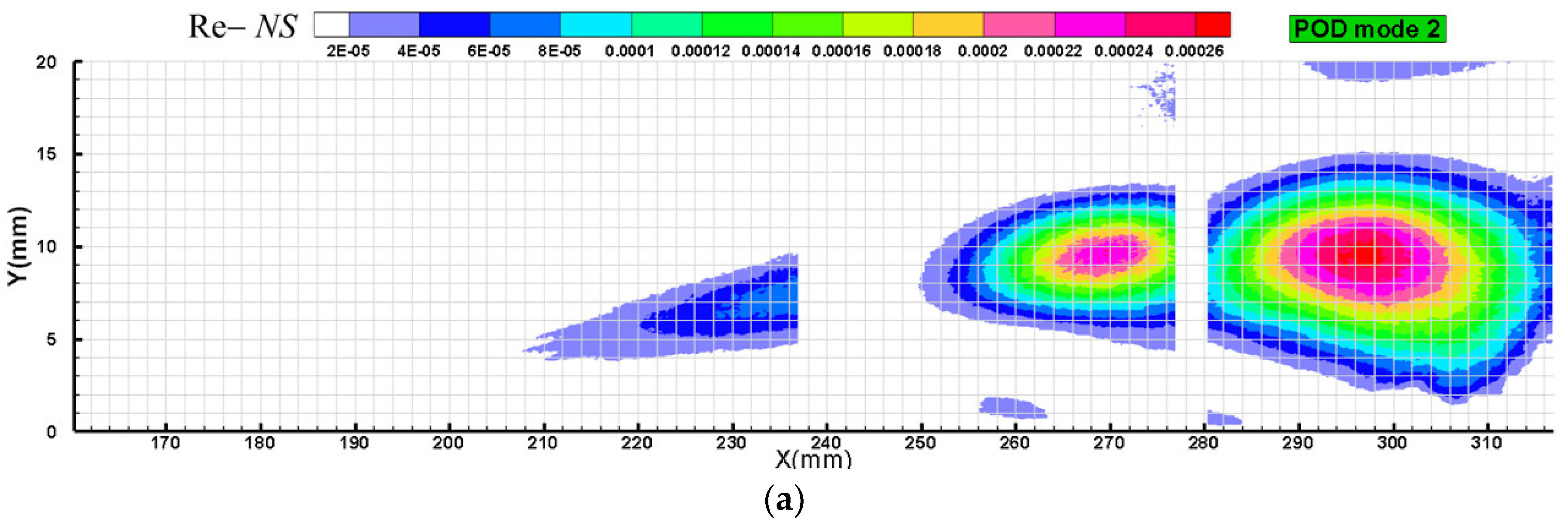

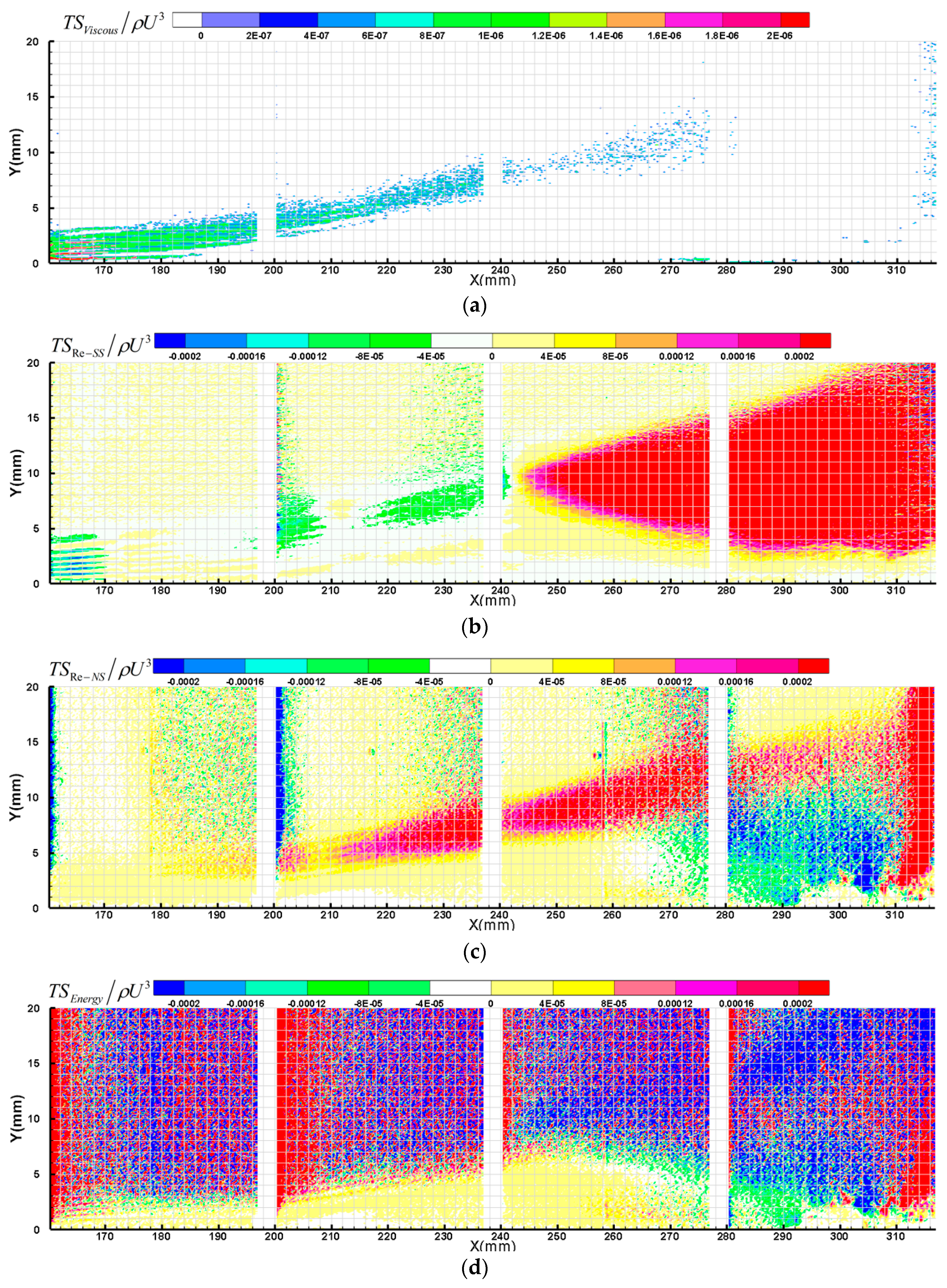
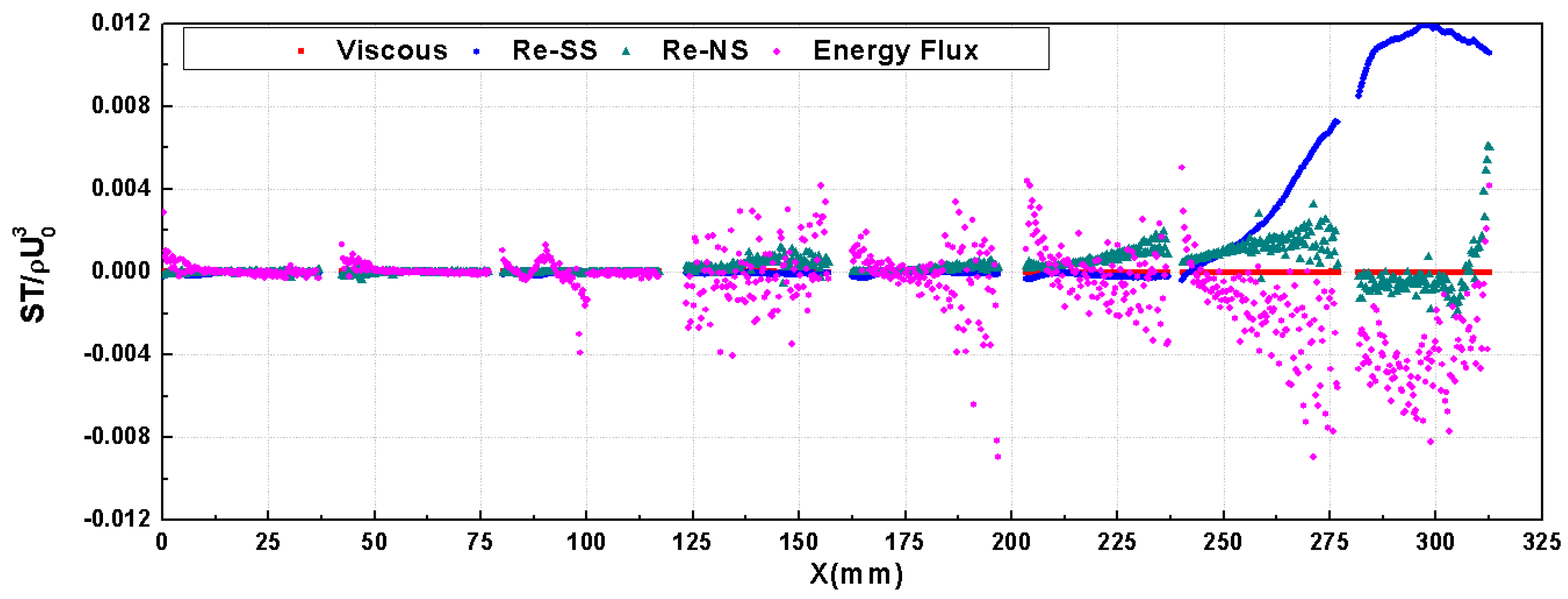

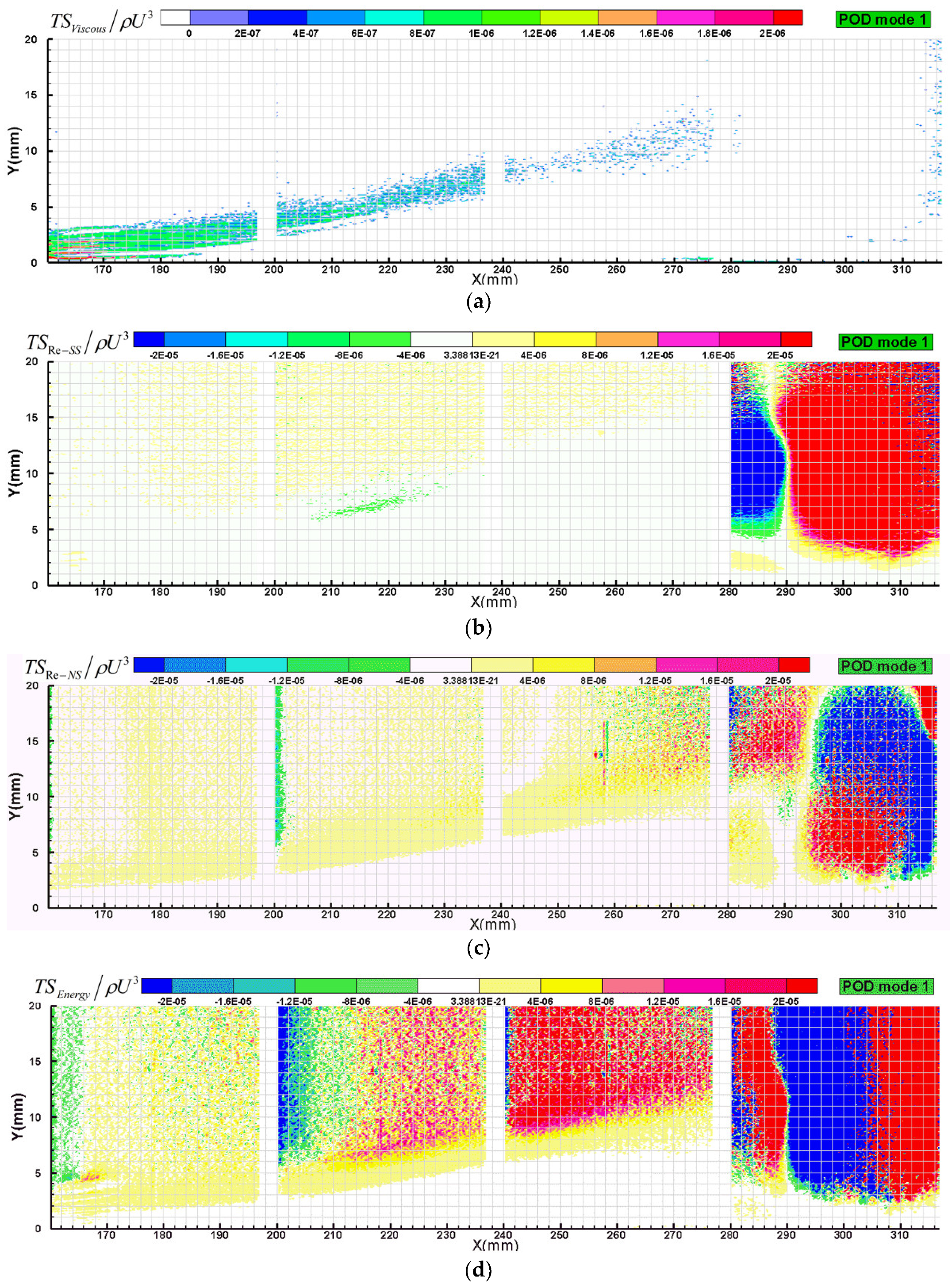




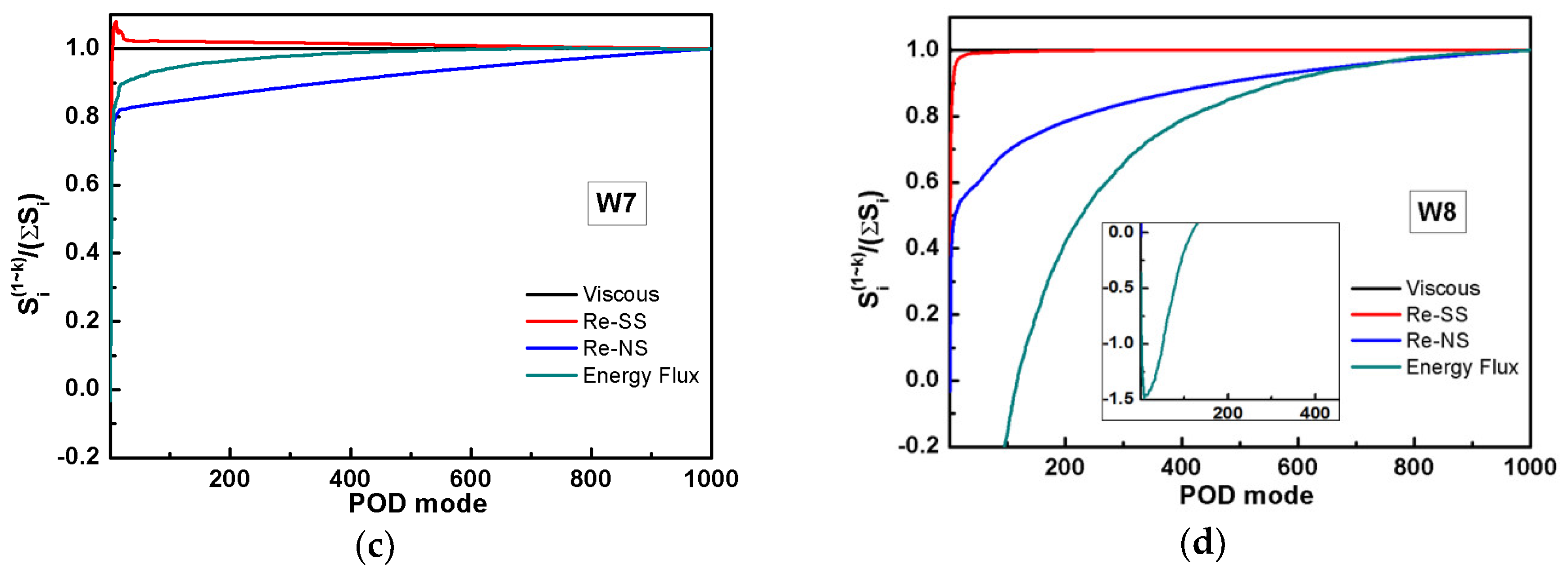
© 2018 by the authors. Licensee MDPI, Basel, Switzerland. This article is an open access article distributed under the terms and conditions of the Creative Commons Attribution (CC BY) license (http://creativecommons.org/licenses/by/4.0/).
Share and Cite
Jin, C.; Ma, H. POD Analysis of Entropy Generation in a Laminar Separation Boundary Layer. Energies 2018, 11, 3003. https://doi.org/10.3390/en11113003
Jin C, Ma H. POD Analysis of Entropy Generation in a Laminar Separation Boundary Layer. Energies. 2018; 11(11):3003. https://doi.org/10.3390/en11113003
Chicago/Turabian StyleJin, Chao, and Hongwei Ma. 2018. "POD Analysis of Entropy Generation in a Laminar Separation Boundary Layer" Energies 11, no. 11: 3003. https://doi.org/10.3390/en11113003



